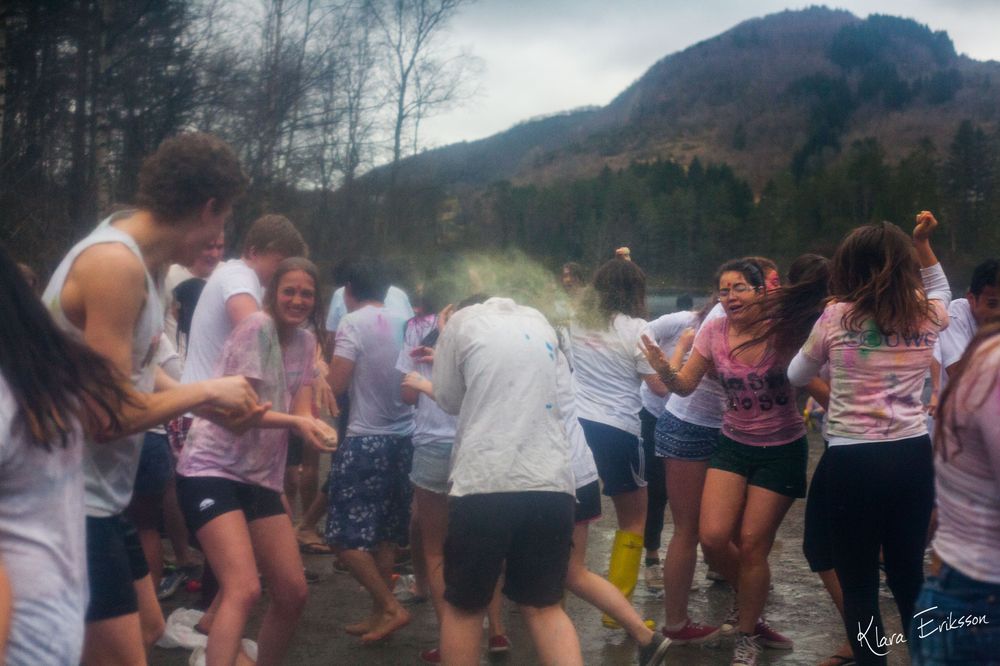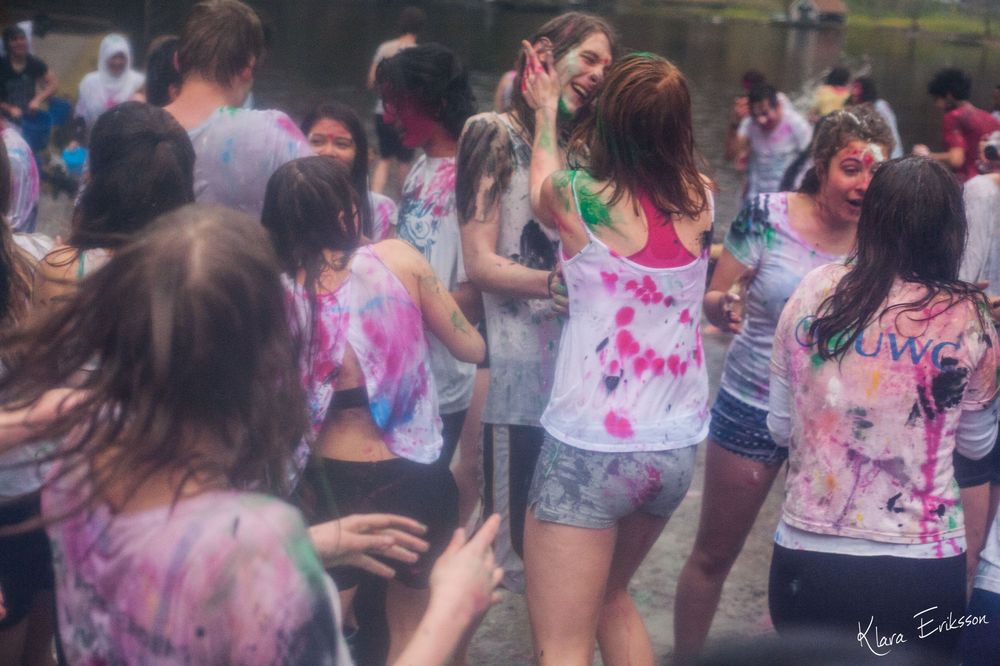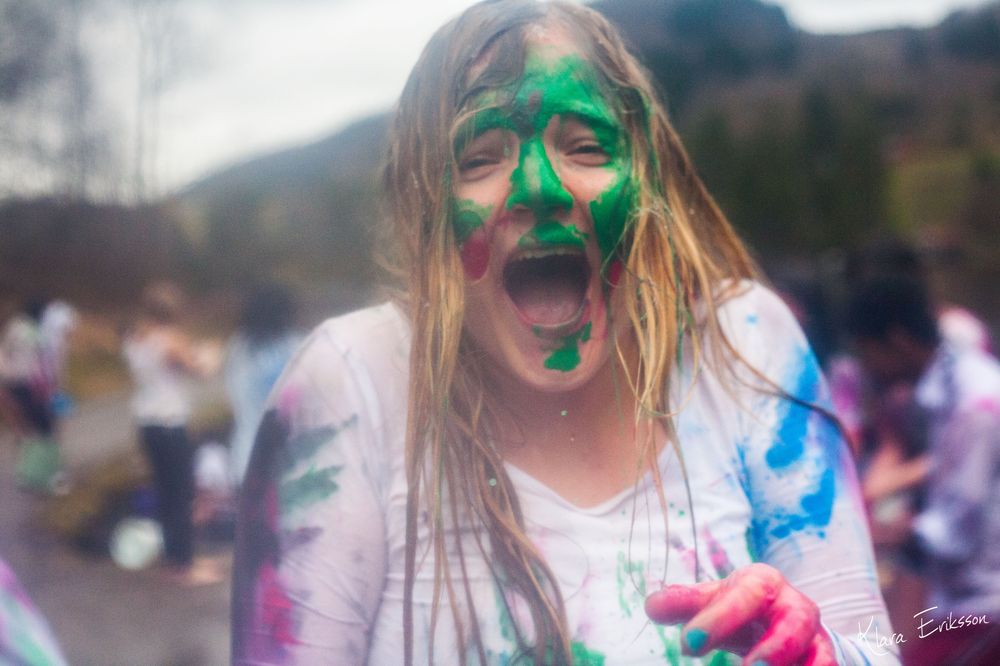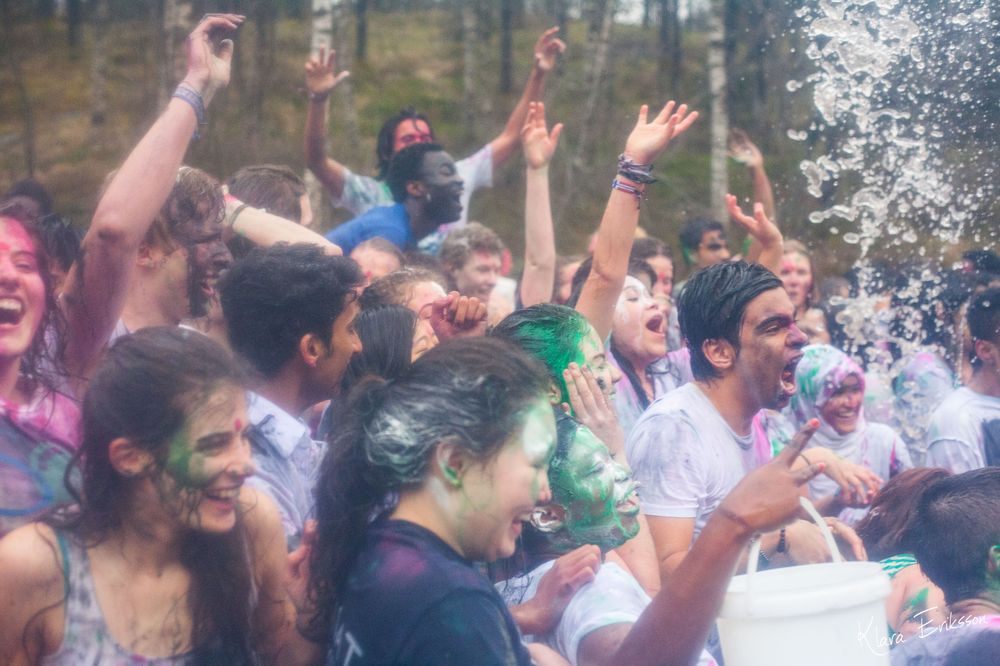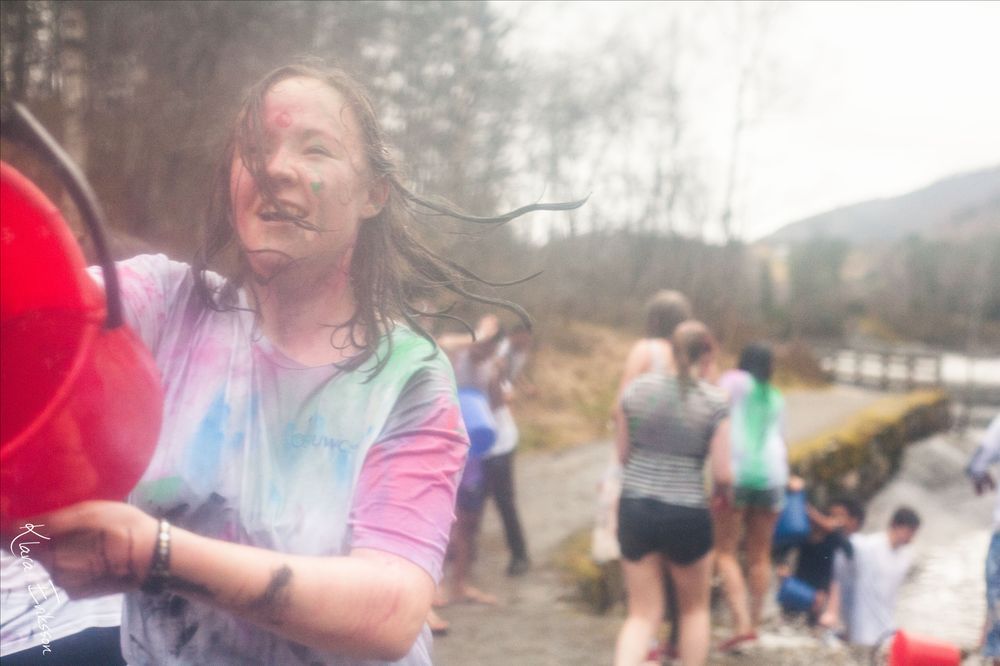/
UWCRCN /
Holi Celebrations (होली)
Indierna och Pakistanierna på skolan anordnar idag det som kallas för Holi för oss andra på skolan, ett firande som kommer att hålla på hela dagen. Nu på förmiddagen hade vi färgfesten och senare blir det Holi Show med Bollywooddans och berättande om vad Holi innebär. Jag kom för ett tag sedan tillbaka från färgfesten, kall och täckt av olika färger efter att ha sprungit omkring i kriget med min kamera instoppad i en genomskinlig plastpåse. Det var fantastiskt och jag känner mig återuppväckt och fylld av liv och glädje. Vilken underbar högtid det är, och jag kan inte hålla mig tills jag kan åka till Indien och uppleva det på riktigt med många tusen människor istället för bara 200 och i ett kallt aprilnorge.
Holi celebrations start with a Holika bonfire on the night before Holi where people gather, sing and dance. The next morning is a free-for-all carnival of colours, where participants play, chase and colour each other with dry powder and coloured water, with some carrying water guns and coloured water-filled balloons for their water fight. Anyone and everyone is fair game, friend or stranger, rich or poor, man or woman, children and elders. The frolic and fight with colours occurs in the open streets, open parks, outside temples and buildings. Groups carry drums and musical instruments, go from place to place, sing and dance. People visit family, friends and foes to throw colours on each other, laugh and chit-chat, then share Holi delicacies, food and drinks. Some drinks are intoxicating. For example, Bhang, an intoxicating ingredient made from cannabisleaves, is mixed into drinks and sweets and consumed by many. In the evening, after sobering up, people dress up, and visit friends and family. It is the festive day to end and rid oneself of past errors, end conflicts by meeting others, a day to forget and forgive. People pay or forgive debts, as well as deal anew with those in their lives. Holi also marks the start of spring, and for many the start of new year.



